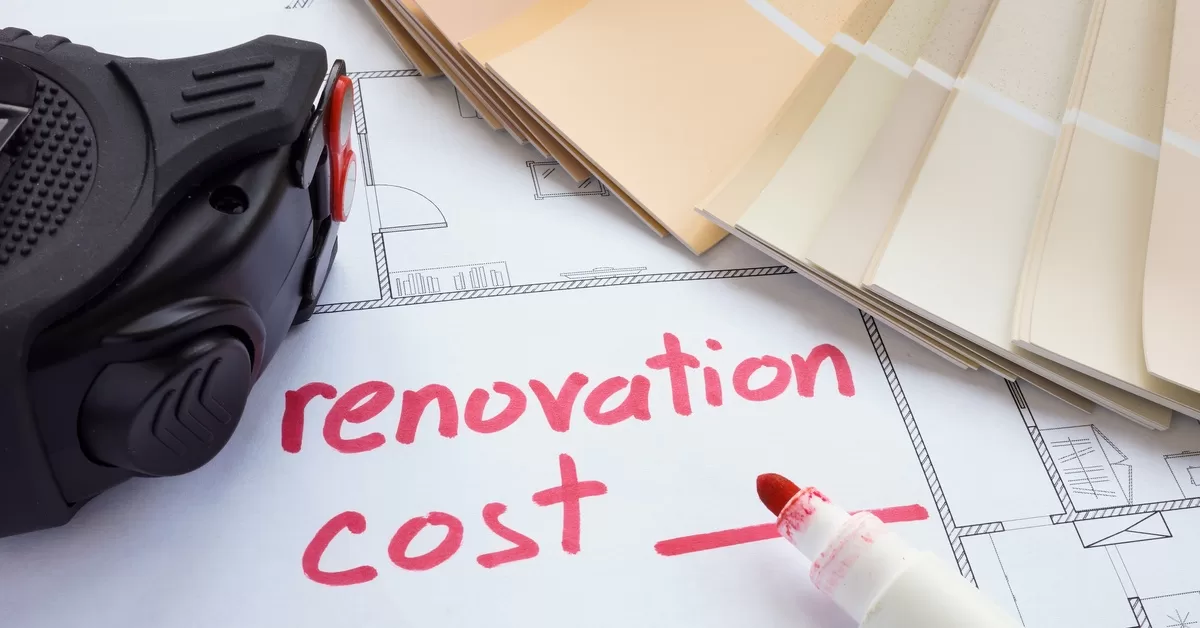A Complete Guide to Budgeting for Home Renovations

Navigating a home renovation can be daunting without a clear budget. Renovations are known for unexpected costs and creeping timelines, but you can avoid common pitfalls with the right preparation. If you’re a homeowner in Louisville or Lexington, Kentucky, planning to revamp your space, this blog is for you.
Here’s a complete guide to budgeting for home renovations, from defining a project’s scope to choosing when to splurge or save.
Why Budgeting Matters for Home Renovations
Home renovations are exciting opportunities to freshen up a space, but they often come with hidden costs. Without a well-defined budget, timelines can expand, expenses can escalate, and stress can multiply.
Budgeting ensures you maximize your investment, avoid financial surprises, and stay on track to complete the project on time. Proper planning allows homeowners to make informed decisions, prioritize spending, and confidently undertake renovations that improve form and function.
Step 1: Assess the Home’s Value
Before setting a budget, evaluate your home’s current market value. To determine a home’s value, check county property valuation records, or use trusted online tools. Or, for greater accuracy, request a detailed assessment from a licensed real estate professional. Real estate agents will base evaluations on recent sales and neighborhood trends.
Step 2: Determine the Renovation Scope
Once you understand your home’s value, begin planning how much to allocate to each area of a renovation. Industry resources, like the National Association of Home Builders and Remodeling Magazine’s annual “Cost vs. Value” report, offer the most up-to-date percentages spent on projects like basements, garages, or additions. Percentages change annually due to inflation, labor costs, and market trends. Reviewing the most up-to-date guides helps prioritize which updates to perform and at what cost.

Step 3: Estimate Renovation Costs
Understanding the cost of a renovation is fundamental to building a realistic and effective budget. Since prices vary based on location, labor availability, material choices, and project complexity, it’s important to base an estimate on reliable and current information.
For a home renovation in Louisville, KY, the most accurate way to gauge potential costs is by speaking with a trusted local renovation professional like Distinctive Design Remodeling. Experienced contractors like us can offer personalized estimates based on the details of a project in an area’s pricing landscape. In addition, we offer packages that include permits and consultations, reducing guesswork.
Step 4: Create a Detailed Budget
With rough numbers gathered, it’s time to build a detailed budget. Start by dividing the budget across these key categories:
- core construction elements such as structural framing and foundational updates
- fixtures and appliances such as lighting or HVAC systems
- finishes including flooring, cabinetry, and paint
It’s important to align with aesthetic preferences while being mindful of where to invest more and where to scale back. For example, a homeowner might opt for more affordable flooring in less-used areas so they can spend more on higher-quality fixtures in a main living space.
Step 5: Factor in Contingencies
No matter how careful the plan is, unexpected issues will arise. That’s why every smart renovation budget includes a contingency fund—ideally between 10 and 20 percent of the total budget. This reserve allows flexibility for water damage, outdated wiring, or other mid-renovation surprises. Local contractors can be helpful here, giving insight into where money will go the furthest based on regional conditions and project scope.
Step 6: Find the Funds for Renovations
How homeowners finance a renovation plays a big role in their long-term satisfaction with the project. Paying with cash or personal savings is often the most cost-effective option, as it avoids interest and long-term debt. Many homeowners set up a “sinking fund,” contributing small amounts each month until they’ve saved enough to begin.
If upfront payment isn’t feasible, there are a few alternatives. Home equity loans or lines of credit are popular for larger renovations. These typically offer lower interest rates in exchange for using a home as collateral. Personal loans are another option, especially for mid-sized or smaller projects, although interest rates and terms vary widely.
In some cases, contractors suggest financing plans directly, which can be a convenient and budget-friendly way to fund your project without the complexity of a third-party lender. Regardless of how a renovation is funded, never borrow more than you can repay. A beautiful new space isn’t worth the financial stress if future stability is at risk.

Step 7: Plan for Unexpected Challenges
Even the most well-organized renovation can hit unexpected bumps in the road. Issues like pest infestations, foundation cracks, asbestos, or permit delays are more common than many homeowners realize. Materials may go out of stock, prices fluctuate, and weather affects construction schedules, especially when updating an outdoor space like a covered patio or screen room.
The best way to manage these challenges is through preparation. Leave room in your schedule and budget for setbacks. Hiring a contractor who knows the local codes, suppliers, and potential problem areas minimizes these surprises. Open communication throughout the process also ensures any complications are addressed quickly, without derailing the project.
Step 8: Know When To Save and When To Splurge
Balancing costs wisely is one of the most important parts of staying on budget. Simple tasks like painting, removing old flooring, or assembling furniture can often be done without professional help. Taking a DIY approach in these areas frees up funds for higher-impact upgrades.
On the other hand, foundational projects, like building an ADU, finishing a basement, or constructing a garage addition, demand professional expertise and durable, high-quality materials. These are not areas to cut corners. Likewise, high-traffic or heavily used spaces benefit from upgraded finishes that will last longer and perform better under daily wear.
Wrapping It All Up
Whether you’re planning a finished basement, garage addition, or new screen room, approaching your project with the right strategy makes all the difference. Following this complete guide to budgeting for home renovations will reduce stress, help you stay on track, and allow you to create a space that adds real value. A thoughtful budget prevents overspending and helps prioritize your goals.
For Louisville and Lexington, KY, homeowners, Distinctive Design Remodeling offers high-quality workmanship for every stage of your renovation journey. From concept to completion, our team is here to guide you through a seamless transformation. Connect with us to kick off your home renovation project today.
